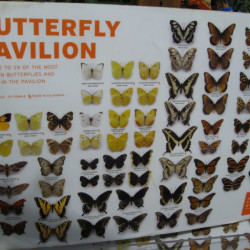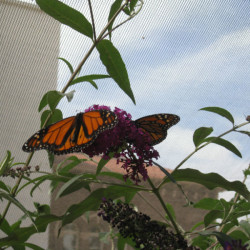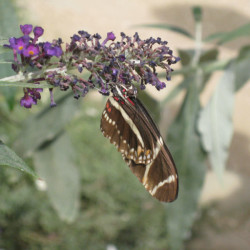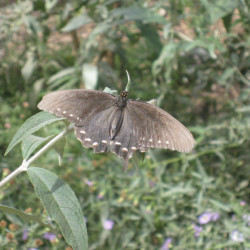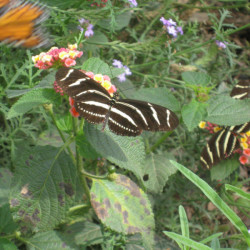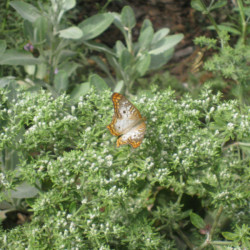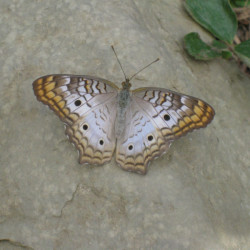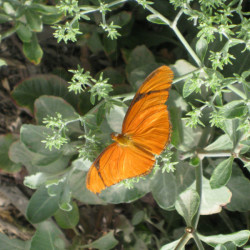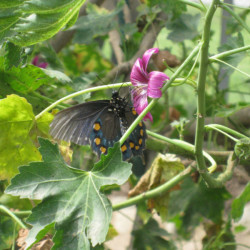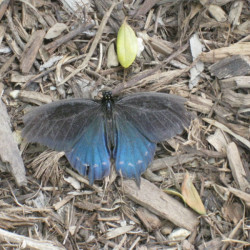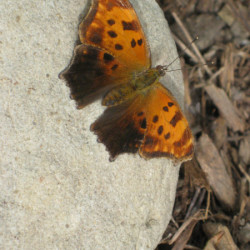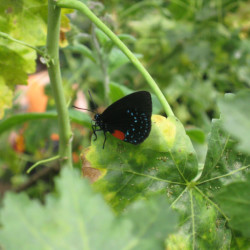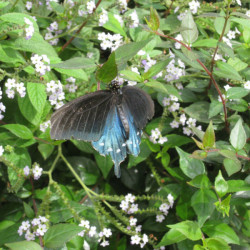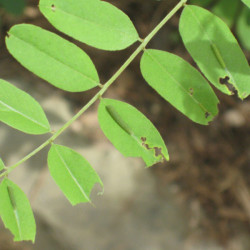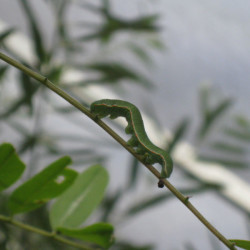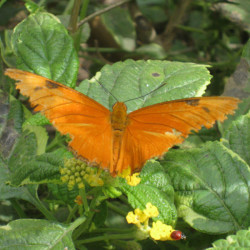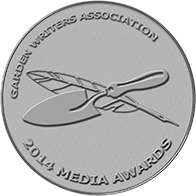The Natural History Museum’s Butterfly Pavilion is more than a place to see butterflies, it’s a place to learn what to grow so you can attract them to your garden. I spent some time there last week taking in the beauty of the butterfly, and words just can’t express it as well as a photograph.
It’s my first time using the “gallery” feature on this blog post, so forgive any formatting glitches when you try to click on the photos to enlarge. Just click on the link to the next photo below the picture, or use you back button and all will be well.
- A handy chart helps you identify the butterflies
- Monarchs love Butterfly Bush
- Zebra Longwing (I think)
- Anyone know what this one is? It’s some kind of swallowtail, missing one tail.
- Zebra Longwing on Lantana
- St. Catherine’s Lace (eriogonum gigantium) attracts them too.
- Is this a White Peacock? So beautiful.
- Julie Longwing butterfly on St. Catherine’s Lace.
- A Pipevine Swallowtail on Island Bushmallow. They also like the Pipevine Calico Flower.
- If I could be this color…
- The only thing that comes close to this one on the chart is called a Question Mark. How ironic.
- I think this is an Atala Hairstreak
- A Pipevine swallowtail
- The caterpillars subsist on certain plants like Milkweed (not pictured)
- This one has a red stripe
- Get a load of that wingspan!
Inside the pavilion we found other plants like Dill and Lilac Verbena, as well as California Dutchman’s Pipe, all of which support the butterfly lifestyle. We saw Monarchs all over some California Asters.
For a list of other plants that attract butterflies, visit http://www.almanac.com/content/plants-attract-butterflies.
For more information on the Natural History Museum’s Butterfly Pavilion, visit http://www.nhm.org/site/explore-exhibits/special-exhibits/butterfly-pavilion


